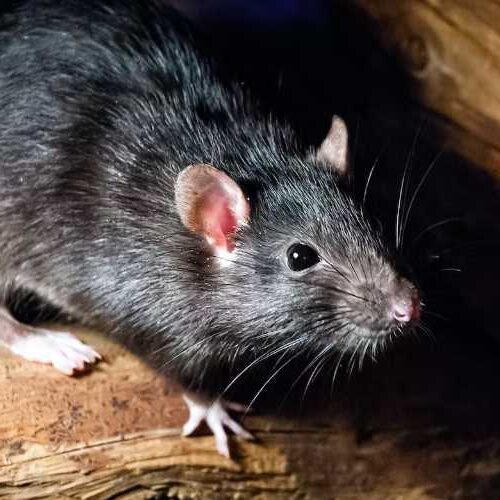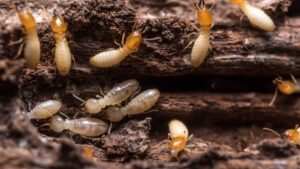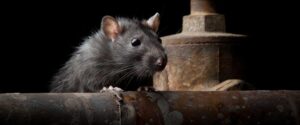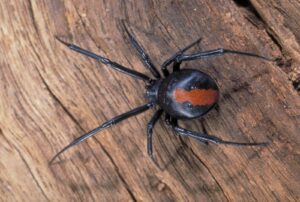Black Rat (Rattus rattus)
The Black Rat, also known as the roof rat or ship rat, is a common rodent found in many parts of the world, including the Central Coast, NSW, Australia. These rodents can cause significant damage to properties and pose health risks to humans due to the diseases they carry. This comprehensive guide will delve into the identification, behavior, and control methods for the Black Rat to help you protect your home and family from these unwelcome intruders.
Identification and Characteristics:
- Size: Black Rats are approximately 12-24 cm in body length, with a tail that can be as long as 28 cm.
- Color: Their fur ranges from black to dark brown with a lighter-colored belly.
- Physical Features: Black Rats have a slender body, large ears, and a pointed snout. Their tail is longer than their body, which distinguishes them from the Brown Rat.
Behavior and Habitat:
Black Rats are agile climbers and prefer higher locations for nesting. In the Central Coast, NSW, they can often be found in roofs, attics, and wall cavities of both residential and commercial properties. They are also known to nest in trees or other elevated areas around the home, such as garden sheds or storerooms.
These rodents are primarily nocturnal and are more active during the night. They have an omnivorous diet, consuming a variety of food sources such as fruits, nuts, seeds, and insects. However, they can also adapt to human environments, feeding on stored food items and waste.
Health Risks and Property Damage:
Black Rats pose several health risks to humans, as they are carriers of diseases and pathogens, including but not limited to:
- Leptospirosis: A bacterial infection that can lead to kidney and liver damage if left untreated.
- Salmonellosis: A foodborne illness caused by the Salmonella bacteria, which can lead to gastroenteritis and severe dehydration.
- Rat-bite fever: A rare but potentially serious illness caused by a bacterium transmitted through rat bites or scratches.
In addition to health risks, Black Rats can also cause significant property damage. They are known to gnaw on electrical wires, which can lead to electrical fires, as well as chew through insulation, wood, and plastic materials. Their nesting habits can also result in structural damage to buildings and contamination of stored food items.
Prevention and Control Methods:
Preventing a Black Rat infestation is crucial to protect your home and family from the associated health risks and property damage. Here are some effective prevention and control methods to consider:
- Sanitation: Proper sanitation is key to preventing rodent infestations. Keep your property clean and free from clutter, store food in sealed containers, and promptly clean up spills and crumbs. Regularly dispose of garbage and ensure your trash bins are properly sealed.
- Exclusion: Seal any potential entry points such as cracks, holes, or gaps in walls, foundations, and roofs. Pay special attention to areas around pipes, vents, and utility lines. Install metal mesh or wire screens over vents and windows to prevent rodents from entering your property.
- Trapping: If you suspect a Black Rat infestation, trapping can be an effective method for control. Use snap traps, live traps, or glue boards to capture the rodents. Place traps in areas where you have noticed signs of rodent activity, such as droppings, gnaw marks, or greasy tracks. Check traps regularly and use gloves when handling dead rodents to prevent the spread of disease.
- Baiting: Rodenticides can be used in severe infestations or when trapping methods prove ineffective. It is crucial to use bait stations that are tamper-resistant and properly labeled to minimize the risk of accidental poisoning of children or pets. Place bait stations in areas with signs of rodent activity and follow the manufacturer’s instructions for use. Always exercise caution and consider consulting a professional pest control expert when using rodenticides.
- Landscape Maintenance: Keep your yard well-maintained to reduce the availability of nesting sites for Black Rats. Trim trees and bushes away from your home to limit access to roofs and attics. Remove any potential food sources such as fallen fruits or nuts from the ground and clean up pet food or birdseed spills.
- Professional Pest Control: If you are facing a severe Black Rat infestation or if DIY methods have proven unsuccessful, it may be time to consult a professional pest control expert. They can assess your property, identify the source of the infestation, and implement a customized treatment plan to effectively eliminate the rodents and prevent future infestations.
Conclusion:
The Black Rat is a common rodent species in the Central Coast, NSW, Australia, that poses health risks to humans and can cause significant property damage. By understanding their identification, behavior, and habitat preferences, you can take the necessary steps to prevent and control infestations. Implementing proper sanitation, exclusion, and landscape maintenance practices can help you keep your property safe and rodent-free.
If you are struggling with a Black Rat infestation, consider seeking professional assistance from a qualified pest control expert. They can provide you with the most effective solutions to rid your property of these unwelcome intruders and help you maintain a safe and healthy living environment for you and your family.
Remember, prevention is always better than cure. By staying vigilant and taking timely action, you can protect your home and loved ones from the adverse effects of a Black Rat infestation in the Central Coast, NSW, Australia.







